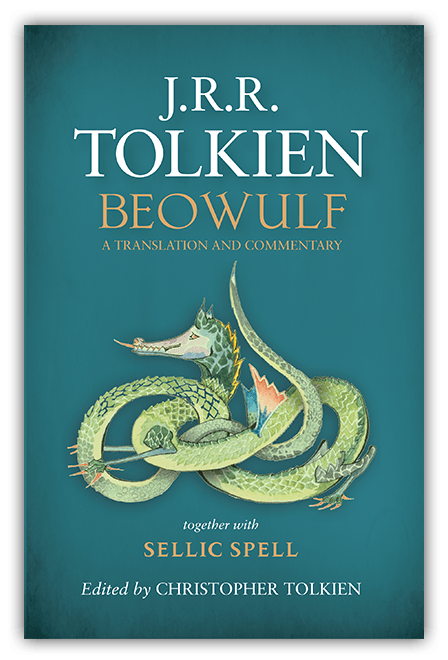Tolkien’s 1926 Translation Of ‘Beowulf’ Published
September 9, 2014
“Beowulf: A Translation and Commentary” by J.R.R. Tolkien, edited by Christopher Tolkien; Houghton Mifflin, NY (448 pages, $28)
———
One does not casually read “Beowulf.” It takes commitment. It also takes a good translation, and few were better at that than Oxford don J.R.R. Tolkien, better known now as the author of “The Lord of the Rings” trilogy.
His son, Christopher, has finally, and reluctantly, published Tolkien’s version of “Beowulf.” As he says in his prologue, his father wrote the translation in 1926 before he went to Oxford as professor of Anglo-Saxon. He would continue to study the poem for decades and lecture on it, but did not produce another translation.
“Beowulf,” a classic man-vs.-monsters tale, was originally written in Old English between the 8th and 12th century. The only existing copy is in the British Museum under glass.
In it, a young prince, Beowulf, goes to the help of a king whose great hall is under attack by a monster, Grendel, known for killing and eating warriors.
Tolkien translated one of Grendel’s attacks vividly: “The door at once spring back, barred with forged iron, when claws he laid on it. He wrenched then wide, baleful with raging heart, the gaping entrance of the he house; then swift on the bright-patterned floor the demon paced.”
Beowulf fights Grendel, follows the wounded monster to its lair, meets up with its evil mother, and kills them both. The king gives Beowulf lots of gold, the prince sails home and becomes king of his own country.
Fifty years later, a stolen goblet rouses a sleeping dragon that comes out to burn the countryside. Beowulf fights the dragon, slays it, but is killed himself.
In Tolkien’s “Beowulf” the dragon’s revenge is almost lyrical:
“Now was the day faded to the serpent’s joy. No longer would he tarry on the mountain-side, but went blazing forth, sped with fire … Now the invader did begin to spew forth glowing fires and set ablaze the shining halls — the light of the burning leapt forth to the woe of men. No creature there did that fell winger of the air purpose to leave alive. Wide might it be seen how the serpent went to war, the malice of that fell oppressor, from near and far be seen how that destroyer in battle pursued and humbled the people of the Geats.”
The poem was a pivotal inspiration for J.R.R. Tolkien, who was fascinated by the language and history. If you have read Tolkien’s fantasy, you can see the influence of “Beowulf” in “The Hobbit,” in which an enraged dragon whose golden hoard has been robbed comes out burning the countryside.
What comes through clearly in Tolkien’s translation is a reflection of a time and a culture. Warriors sit at their kings’ tables, elegant “ring-laden” queens serve mead, the warriors go raiding and die. The women who lament at Beowulf’s funeral pyre sing of a sorrowful future, “singing in sorry, oft repeated that days of evil she sorely feared, many a slaying cruel and terror armed, ruin and thraldom’s bond.”
Included is “Sellic Spell,” a simplified version of “Beowulf” and two versions of songs Tolkien wrote about Beowulf for his children in the 1930s.
While most of “Beowulf” is in modern English with copious notes for those fascinated by Tolkien, if you are studying Old English, you are in for a treat. Christopher Tolkien has included various notes and sections in the original.
———
©2014 McClatchy Washington Bureau
Visit the McClatchy Washington Bureau at www.mcclatchydc.com
Distributed by MCT Information Services
















